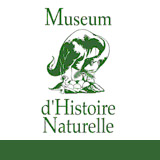
Natural History Museum of Aix-en-Provence
The Herbarium of the Museum of Aix-en-Provence possesses around 80 m3 of dried plants distributed in 2 large storage rooms. The collection was assessed at 420,000 specimens, split in approximately 80 herbaria of various interests. Some, relatively old, are of heritage or historic value, other have educational purposes; others, still, are of significant scientific interest and may contain nomenclatural type. The Herbarium of Aix (AIX) is one of the largest herbarium collections in the Provence Alpes Côte d’Azur (PACA) region assessed for the time being at 1.5 million specimens), with the one of Avignon. Composed due the Museum’s activity since its foundation in 1838, they are regularly enriched by donations or purchases. The Museum also received on deposits the entire herbaria of the University of Paul Cézanne of Aix-Marseille II (MARSSJ).
From an patrimonial perspective, the Museum of Aix en Provence has a medicinal herbarium dating back to the 18th century, a notebook composed by a student in medicine or pharmaceutics , in which plants are classified according to their medicinal properties, there is also a “young lady” herbarium, a nameless book that contains a collection of flowers (19th century).
The cryptogam herbaria, of significant scientific interest, represent an important part of these collections (30,000 specimens) mainly due to the large lichens collection gathered by Raymond Dughi, a former curator of the museum. This collection presents 17,000 samples from all over the PACA region, collected between 1850 and 1950. The most beautiful collection of mosses, composed carefully by German Van Hoppe in 1816, gathers the most common mosses of Germany.
The Museum also possesses an old anonymous herbarium composed of 2,500 algae dating back to 1810-1820 from the Cherbourg region, and an algae herbarium from the Marseille area, made in the 1930s. It is a valuable inventory of the local marine environment of which we have little to no information. There are several herbaria of saprophytic fungi, parasites, and mycorrhizae (Couderc, Feuillaubois, Brévière, etc.).
Among the phanerogams collections, local herbaria are well represented especially with those of Achintre & de Fonvert and de Reynier, botanists of the region in the late 19th century. The Var department is the most represented with the Fiereck Herbarium, the Reynier Herbarium, the Jahandiez Herbarium, and the Lacroix Herbarium which includes sheets of de Blanc. The Gap region is illustrated by the de Borel Herbarium. Many herbaria have plants from all across France (the Avignon Brothers’ Boarding school Herbarium, Audibert Herbarium, Gruber Herbarium ...). The phanerogams herbaria gather plants of various geographical origins. The Mediterranean region is represented by the Quézel Herbaria (Greece, Turkey); Cousturier (Crete), Zevaco (Corsica, Crete), Abtroun, Hébrard (Cyprus)...
The African continent is illustrated by the Baudon and Maoux Herbaria that gather plants from Togo, Gabon and Congo; the Winter Herbarium from South Africa and Angola; the Quézel Herbaria from Sudan, Chad, and Algeria; the Jahandiez and Cousturier Herbaria for Northern Africa. There are about a100 nomenclatural types from Africa (Quézel, Jahandiez, and Winter Herbarium). Ferns from New Caledonia and Borneo were collected in the early 20th century.
Two herbaria were made for educational purposes. The first one, from the 19th century, was made by the brothers of the Christian Schools of Avignon, and used to teach how to identify families ,and learn their properties. The second one made between 1980 and 1990 by a team of college lecturers from the University of Aix Marseille 3 (among them was Michel Gruber), was used to identify species from the multiple ecological environments in the Mediterranean region, from the coastal dune to the snow coombs.
The computerization of the herbaria started in 2001 under the Access format; more than 18,000 specimens have been registered. Data conversion on Sonnerat is still ongoing, as well as the computerization of additional herbaria.
Contact
Yves Dutour : dutoury@mairie-aixenprovence.fr

Medicinal Herbarium from the 18th century © MNHN - Patrick Lafaite

Fungi specimens preserved with thin paper. Unknown collector © MHNA

Types of Euphorbia nereidum Jah. and Maire. Émile Jahandiez Herbarium © MHNA

Restoration of the herbaria by a team of volunteers © MHNA